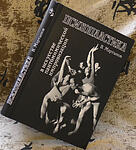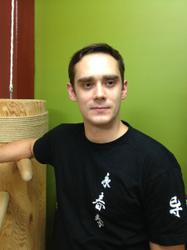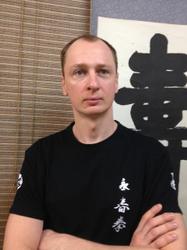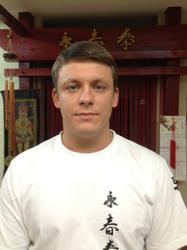Wing Chun of the Te Kong Line: Ng Mui
Ng Mui and Dao White Eyebrow’ were in one of the Taoist monasteries in the Emei Mountains where they and other students of Ngok Ga Kuen (Nei Tszya Quan) had practiced the internal style over several generations with Taoist Gun Fu Masters. Ng Mui and Dao White Eyebrow had arrived in Shaolin as already accomplished Emei Gun Fu Masters, very well informed in the extended methods of internal work’.
To develop Gun Fu and maintain traditions, the Shaolin Monastery invited known Masters and other individuals as teachers and mentors. South Shaolin was connected to the Chan Buddha School, which formed out of the inter-influences of Buddhism and Taoism. The monastery was opened to all those looking for the truth – whether they were Taoist, Buddhist or Confucianist. If a person didn’t latch onto the internal differences and forms, but was looking for deep truths, he had a chance to get it there! Thus Ng Mui found herself in Shaolin.
The legend insists that Ng Mui killed Fong Sei Yuk, a famous warrior, in a duel. He has always been proud of his impenetrable iron’ body. At that time Ng Mui was already not that young, at least about 20 years older than her younger and energetic opponent. Modern martial arts Masters believe that Ng Mui beat Fong Cei Yuk, not in a hand-to-hand fight, but in a battle with weapons. In this case, the strengths and chances for victory of a man or woman level off. This version seems to be the most likely.
After the defeat of South Shaolin, Ng Mui ran into the Emei mountains and hid in the White Crane Monastery (Sichuan province). There, according to legend, she became one of the witnesses of a fight between a crane and a snake, which inspired her to create Bac Hok Kuen: The Fist of White Crane’. It is considered that, during her life, Ng Mui’s style had at least two variations.
Another legend tells that Ng Mui, already in Shaolin, taught her own style, combining the best qualities of Emei and Shaolin Gun Fu. One of the best students of the nun happened to be a Manchu spy. He conspired against the Qing government. Then he became a mentor to the Manchu officers. Having become engrossed in the effectiveness of the Ng Mui style, the officers took it on board. Having found out about this the nun decided to create another improved style to deprive the Manchu of their advantage. As a result Ng Mui designed a new fighting concept, excelling her own Shaolin version in speed, strength and refined control. The new style’s moves were more economical, were made without accelerating pre-flight, with the use of not rough’ muscular strength, but the soft-hard strength of tendons. Fights were of close quarters combat form. The basic elements were its hand techniques, the feet being used only in limited cases, e.g., to make moves over their opponents’ feet and lower body parts.
A monk (seen later as a traitor) who was a former student of Ng Mui, decided to remain the only possessor of this style, found the mentor and eventually challenged her. The new technique of Ng Mui worked faultlessly. The betrayer was killed.
Having tried this new unique system of martial arts, Ng Mui left the White Crane Monastery. Now Manchu authorities were looking for her as a killer. Constantly in hiding, she was wandering around the south provinces, avoiding staying anywhere for any length of time. Once in Yuanzhou, on the border of Jiangxi and Guangdong, she met Miu Shun, who she new from her Shaolin days. Miu shun, a former Shaolin monk and a martial arts Master at that moment was trading in healing herbs and remedies. He offered Ng Mui his hospitality and help. Ng Mui stayed in Unchzhou for several years. During that time she taught Miu Shin her unique Gun Fu. Being a very talented specialist, Miu Shin combined Ng Mui style with his own Snake style. As a result he attained a new style, which had no name yet (several sources say that this style was called Buddha Hands’ Fist’). Miu Shun taught his art-sworn brother called Yim Yi.
Blossoming Spring’
Yim Yi (Yim Sey, Yi Gung’) had earlier been a part of the anti-Manchu organisation connected with the Shaolin Temple. Being a very rich man, Yim Yi donated large amounts to the revolutionary movement. When the Manchu got its hands on the conspirators and began to carry out arrests, Yim Yi escaped to Guancy. There he opened a shop and began to trade in soya products. Yim Yi began to teach his daughter Yim Sam Leung, named after her beauty and grace, Yim Vin Chun ( Blossoming Spring’ Yim).
Leung Bok Cho (Leung Bok Lao, Leung Bok Chao, Chan Fu-Sao) became a second student of Yim Yi. Since childhood, Leung Bok Cho studied martial arts and had been looking for a highly qualified teacher for a long time. He traded in salt and arrived in Yuanzhou on trade business. One case brought him to a soya product shop. Thereafter Yim Yi and Leung Bok Cho got to know each other and became friends. In this way Leung Bok Cho began to study Gun Fu from the old Master. Soon Leung Bok Cho and Yim Vin Chun fell in love with each other and Yim Yi blessed his daughter and the student for married life. The old Master died a few years later. Having buried Yim Yi, Leung Bok Cho and Yim Vin Chun left Yuanzhou and moved to Zhaoqing, Guangdong province. After several years of an epidemic, Yim Vin Chun fell ill and died. For the inconsolable Bok Cho, the meaning of life became the continuation of the Gun Fu system’s traditions. Wrapping up his business Leung Bok Cho set off for a journey in search of suitable people to teach the fighting system, which he called Wing Chun Kuen ( The Fist of the Blossoming Spring’) in his wife’s honour.
based on www.tekong.net





 Коан – вопрос к членам Федерации Юн Чун Цюань от президента В.В. Мартынова: «Что Вы сделали для Федерации из того, что не мог бы сделать любой другой за деньги?»
Коан – вопрос к членам Федерации Юн Чун Цюань от президента В.В. Мартынова: «Что Вы сделали для Федерации из того, что не мог бы сделать любой другой за деньги?»


